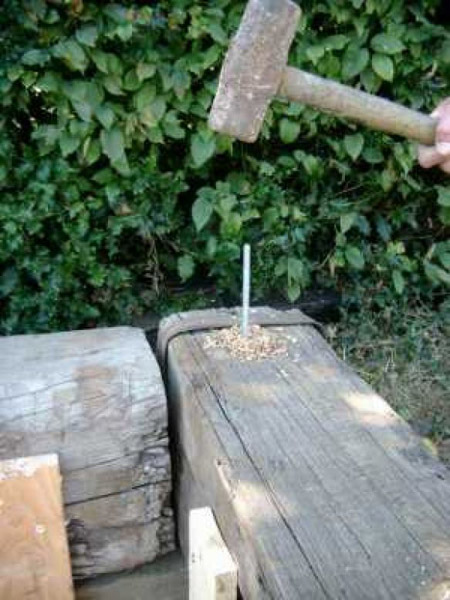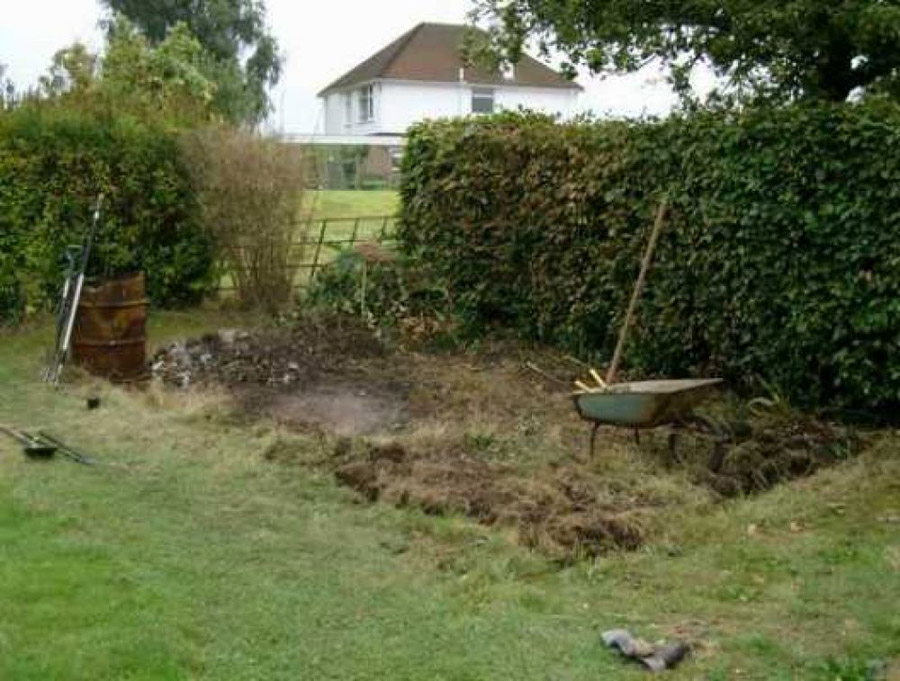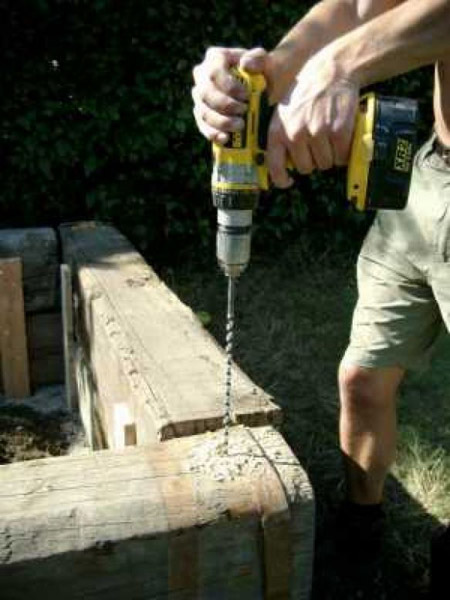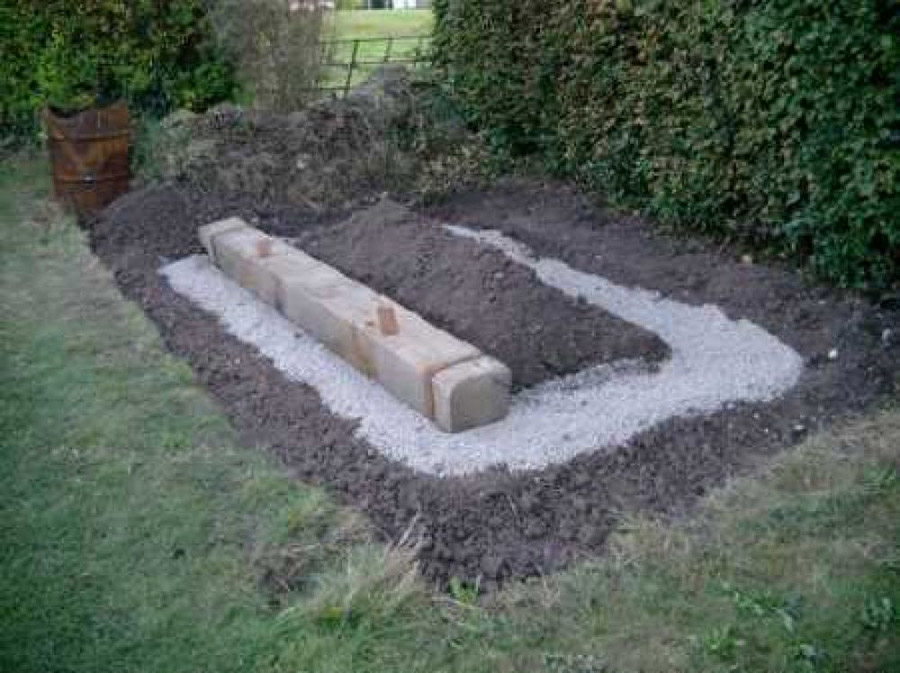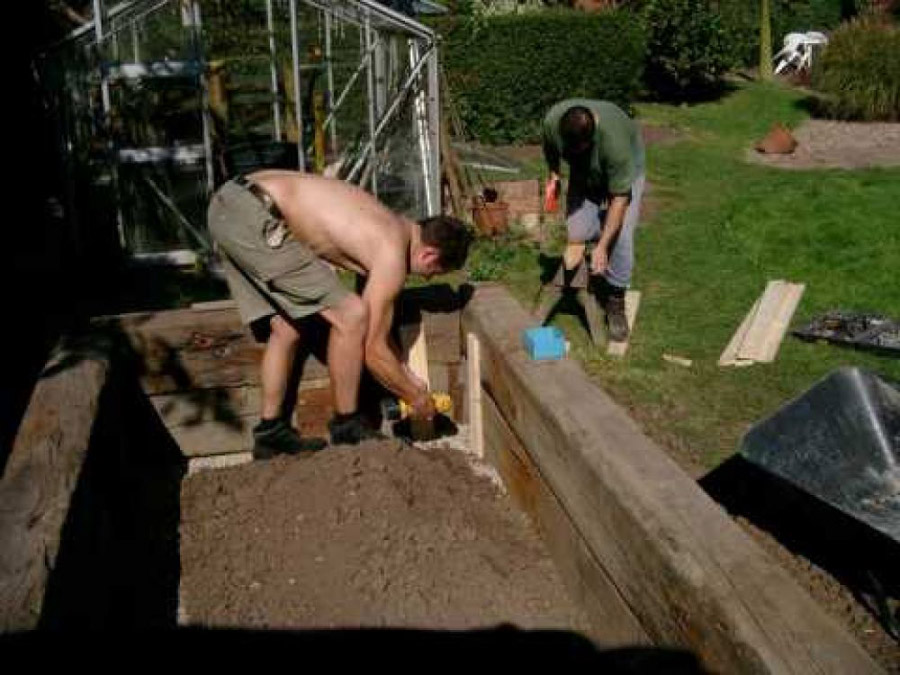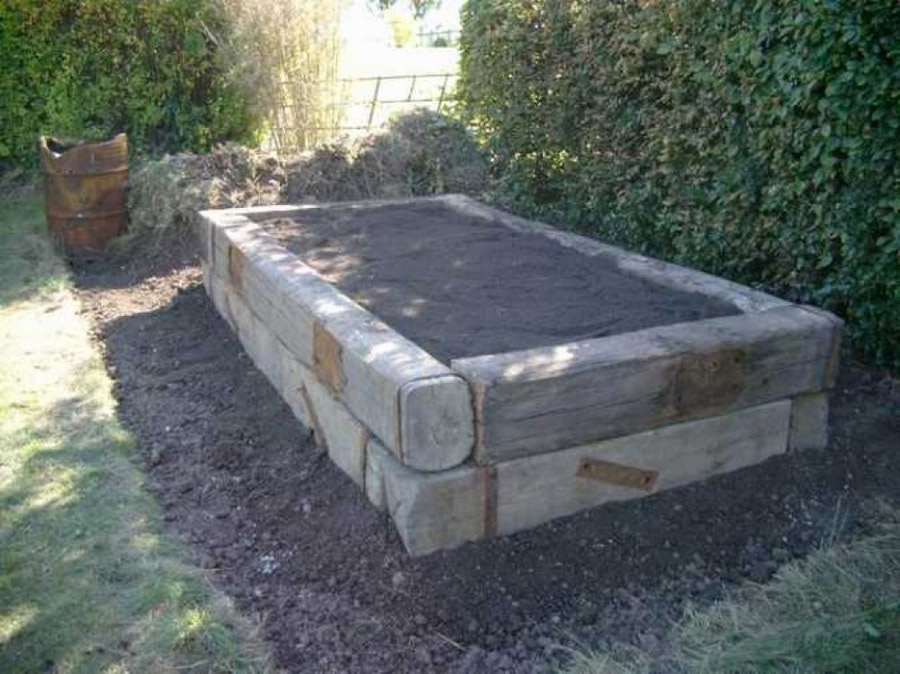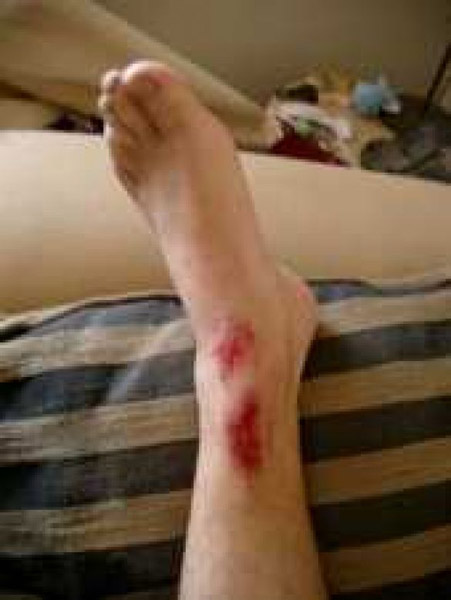Here are a few photo's of the raised bed construction process from the railway sleepers I recently purchased from you. The first photo shows the area for the raised bed followed by a the 2nd photo of the gravel base which was compacted level for bedding of the railway sleepers.
The railway sleepers were stacked in a corner bond pattern and held together by screwing stakes (that had been knocked into the ground) to upper and lower railway sleepers depicted in photo three.
In photo four, all four corners were drilled with an 8mm Auger bit which penetrated both sleepers. Then a metal rod/bar of roughly the same size as the drill hole was hit home for added rigidity seen in photo five.
Finally the bed was filled with soil with the use of wheel barrow and scaffold planks, leading to a finished raised bed.
The clearing, weeding and levelling of site took around 8 hours and the bed took about 2 hours to construct and fill. Moving railway sleepers advice:- I found these railway sleepers were ok to carry with a person at each end but it does mean someone walking backwards which can be dangerous as I found out when the front facing person trips, and in a dramatic 'tossing the caber' type move thrusts the railway sleeper into the other's midriff who then drops the railway sleeper down his ankle and has to rest for a day with a foot in the air. The ankle was strapped for the following day and a new railway sleeper shifting method adopted. Two pieces of wood were put across a sturdy wheelbarrow and then the railway sleeper laid lengthways on the barrow with much of it between the two handles. The railway sleeper was positioned to give the right balance and then with a person each side with one hand on the railway sleeper and the other holding a handle the barrow could be lifted and pushed with ease and steering was a doddle. Hope this info proves to be of interest if only to laugh at my foot and call me a clown.
Chris G
Bradmore, Nottingham
RAILWAY SLEEPERS USED:
Used square Dutch oak railway sleepers
2600mm x 250mm x 240mm
RailwaySleepers.com Says..
Excellent photos showing the full development of such a large and solid raised bed with the square used railway sleepers. If not a little painful! Hope the foot is much better now?

